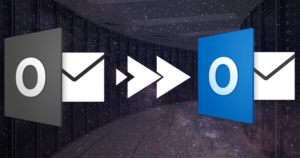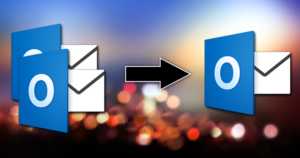Have you ever come across a situation where the size of an Outlook data file becomes 0KB? This is one of the most common issues faced by Outlook users. I’ve often seen users asking whether it’s possible to recover anything from a 0KB PST file. There are many articles containing the information regarding this topic. However, only a few of them provide the right information. In this article, we’re going to discuss whether Outlook email recovery is possible from a 0KB PST file.
0KB PST File
A couple of months ago, I was facing a problem while opening the PST file. I always received an error message whenever I tried to open the file. I thought it might be corruption so I ran the Inbox Repair tool. But again I received an Outlook error message something like this,
I had no idea why this is happening. Then I checked the size of that PST file, and I found it was 0KB. I was lucky because I had the backup. I restored almost all the mailbox data from the PST backup I took earlier. This is something what I personally experienced.
Many of you would’ve faced a situation like this. How many of you have successfully recovered your data from a 0KB PST file? Perhaps none of you would’ve done that. Because if you ask me whether it’s possible or not, then my answer is NO. There’s no way to restore anything from a 0KB PST file, even if you use a professional PST Recovery tool. Outlook email recovery is only possible if you have a valid backup file. Let’s find out the most possible reasons for this common Outlook problem.
Most Possible Reasons
It ain’t usual that an Outlook data file turns into a 0KB file all of sudden. Have you ever tried to find out the reasons for this common Outlook problem? There’s no way to resolve the problem if you can’t diagnose the real cause. Below are the most possible reasons due to which a PST file becomes a 0KB file:
Reason #1 – Running the Check Disk tool
One of the most common reasons for this common Outlook problem is running the check disk tool (chkdsk) more than often. Generally, the Check disk tool is primarily used to check the integrity of the disks. It thoroughly scans the disks and fixes the logical file system errors (if found). But if you run the chkdsk command more than often, the PST file may (possibly) become a 0KB PST file.
Reason #2 – Storing Outlook Data File on a Network Drive
Storing the Outlook data file on a network drive may put it at a high risk. Because whenever any sort of crash or error occurs in the network drive, it may damage the PST file. Even storing the PST file in a folder that syncs to the cloud may cause corruption and other issues.
Reason #3 – File Corruption
Generally, corruption is the most common reason for almost all common Microsoft Outlook problems. There are various reasons for Outlook mailbox corruption. And whenever corruption occurs in the Outlook mailbox, it may happen that the Outlook data file becomes a 0KB file.
Reason #4 – Human Errors
Sometimes human errors can also lead to a situation like this. The two most common human mistakes include:
- You copy a PST file which is already being used by Microsoft Outlook on your computer. Though this will create the PST file, the size would be 0KB. But the original PST file remains intact. Sometimes it may happen that you delete the original PST file without noticing its size. And then you realize that the PST file you deleted was the original one. Now you only have the 0KB PST file.
- Let’s suppose you write a PST file on a compact disk (CD). After that, you move it back to hard disk drive. And now when you try to open the PST file, you receive an error saying the Outlook file is not a personal folder file. You check the PST file size, it’s 0KB.
Check out our latest arrival on Outlook PST Repair.
Outlook Email Recovery
Outlook email recovery is nearly impossible from a 0KB PST file unless and until you have a valid backup file. Some users may recommend you using a 3rd party PST Recovery tool for Outlook email recovery. But the fact is that no 3rd party tool can recover anything from a 0KB PST file. So don’t purchase any such dubious software. Instead, you should restore it from the backup if it’s available. But if there’s no backup, you should use a couple of easy DIY tricks. Although I don’t guarantee that the tricks would surely work, there’s no harm in trying them. You can use any of these tricks:
Trick #1 – Use Auto-archive Feature
Microsoft Outlook has a built-in feature, Auto-archive. If you enable this feature, Outlook will move the old emails and other items to a separate PST file on your computer system. So if you’ve enabled this feature earlier, you can use the archive PST file to perform Outlook email recovery. You just need to locate that archive file.
- First, launch Microsoft Outlook. On the taskbar, click the File tab > Info > Options.
- On the Outlook Options dialog box, click the Advanced tab (shown on the left side).
- You’ll see the AutoArchive option there. Under this option, click the AutoArchive Settings… button.
- On the AutoArchive dialog box, click the Browse… button.
This will browse the location of the archive PST file. Now you can use this PST file, and don’t forget to check the file size.
Trick #2 – Use Previous Windows Version
If you have no backup and even you can’t use the Auto-archive option, don’t worry as you have another option for Outlook email recovery. Have you heard about the “Windows previous version” feature? It’s a part of the System Protection/System Restore option in a Windows system. It’s very helpful for those who don’t take regular backups. Depending on the file type, you can open it, save it to a different location, or restore its previous version. See how you can do that:
- First, browse to the location where the Outlook folder containing the PST files is stored.
- Right-click the folder, and click “Restore previous versions”.
- On the Outlook File Properties dialog box, click the Previous Versions tab.
- Now you need to select the folder versions, and click the Copy… button.
- On the Copy Items dialog box, define a location where you want to copy the previous version of your Outlook data file (PST).
- Then click the Copy button. This will create the copy of your PST file.
So whenever you face a situation like this, you have only three options:
- Restore the PST file from backup
- Use the Auto-archive option
- Or, use the Windows’ previous version
Important note: If you think that a 3rd party PST Recovery tool can really help you in Outlook email recovery from a 0KB PST file, you’re absolutely wrong. No 3rd party tool is capable to recover anything from a 0KB PST file. When a PST file turns into a 0KB file, this means nothing is left in the file. In such a situation, a 3rd party tool fails to recover anything from it.
Outlook users might also be interested in Repair PST File by Using the Inbox Repair Tool
Conclusion
In this article, we’ve discussed a situation where the size of an Outlook data file becomes 0KB. Also, we’ve discussed the most common reasons for this problem. The article explained a couple of easy DIY tricks which you can use to restore the PST file if its size becomes 0KB. However, backup is the only reliable solution you can actually rely on. Therefore, it’s strongly recommended to take a backup regularly in order to prevent data loss.
Note: Outlook users might also be interested in PST to Office 365 Migration.
- How to Convert Outlook Email to HTML? – A Complete Guide - July 19, 2024
- How Can You Back Up Google Calendar? - July 11, 2024
- What is Entra ID? Basic Concepts and Benefits of Entra ID - July 4, 2024




